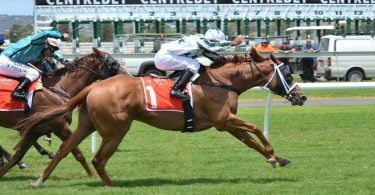Fundamentally speaking, cycling is an endurance sport with competitors having to cycle hundreds of kilometres at an incredible intensity, often averaging around 40kph.
Fundamentally speaking, cycling is an endurance sport with competitors having to cycle hundreds of kilometres at an incredible intensity, often averaging around 40kph. This places huge demand on the body to transport sufficient oxygen from the lungs to the working muscles for energy production.
If oxygen delivery cannot be sustained at the level required, an athlete will either be forced to slow down, or risk switching from the aerobic to anaerobic energy pathway which can often lead to a cyclist “hitting the wall”.
Therefore from a performance enhancement perspective it would be logical to boost the body’s oxygen-carrying capacity and Lance Armstrong and the USPS cycling team did this to great effect.
Blood Boosting
Erythropoietin or EPO is a naturally-occurring hormone that is the principle regulator of erythrocyte or red blood cell (RBC) production. RBC’s carry oxygen in the bloodstream and deliver it to tissue for use in respiration. Within RBC’s is an iron-containing molecule called haemoglobin which binds readily to oxygen and is responsible for our blood’s red colour.
During times of hypoxia (low oxygen supply) EPO is excreted to stimulate RBC production in the bone marrow, increasing the number of RBC’s in the bloodstream and directly improving its oxygen-carrying capacity. When injected into the bloodstream, EPO has the same effect inducing RBC production above the natural homeostatic level, giving an athlete an advantage over his / her competitors.
Illegal use of EPO is difficult to detect as it has a half-life of approximately 5 hours. This means 5 hours after administration, only half of the original volume of EPO remains in the bloodstream and after 10 only a quarter and so on.
Blood Transfusions
Another method utilised by Lance Armstrong and his doctors was blood doping. This involves re-infusing the body with blood taken from an earlier date. When blood was withdrawn from Armstrong and his colleagues it was centrifuged, separating the individual components (RBC’s, White Blood Cells and Plasma). As the RBC’s are of most use they were kept refrigerated at 1-6°C.
A 500g bag of blood can be kept for around 5 weeks before the quality of the RBC’s begin to deteriorate. The concentrated blood is then re-infused prior to a race, increasing the number of RBC’s in circulation improving the blood’s oxygen-carrying capacity.
However an increase in blood viscosity is observed and more importantly increased haematocrit levels. Your haematocrit level refers to the percentage concentration of RBC’s in the bloodstream.
On at least one occasion Armstrong was within minutes of being over the set haematocrit level, which would have disqualified him from competition. In order to avoid detection he was infused with saline solution, increasing the apparent volume of blood plasma relative to RBC count bringing him back within legal limits.
Arms race
As anti-doping measures evolved Lance Armstrong and his team of doctors devised ever more ingenious methods of improving performance whilst avoiding detection. Until recently autologous doping was completely undetectable so long as haematocrit values were in order.
However, at the US Anti-Doping Agency’s (USADA) request Lance Armstrong’s blood samples were examined by Professor Christopher Gore in conjunction with the recent doping investigations.
He was able to determine that 7 of 9 blood samples taken from Armstrong during the 2009 and 2010 Tour de France contained unusually low percentages of reticulocytes. Reticulocytes are immature RBC’s that lie dormant until stimulated by EPO to mature and become active. This allows the body to replace an RBC at the end of its cell cycle or fight off the effects of acute hypoxia more quickly than producing a whole cell from scratch.
When blood is re-infused into the body a feedback loop detects that the body has a higher than normal percentage of RBC’s available. This supresses the production of reticulocytes, reducing their percentage concentration below that of an average human (1%).
Revelation or Revolution?
While the methods of doping will continue to evolve science has reached a critical moment. Our understanding of key homeostatic parameters allows detection of changes outside what is considered “the biological norm”.
Therefore while scientists may not be able to detect exactly what is causing any potential abnormal fluctuations, they are becoming measurable, which is surely a step in the right direction.








